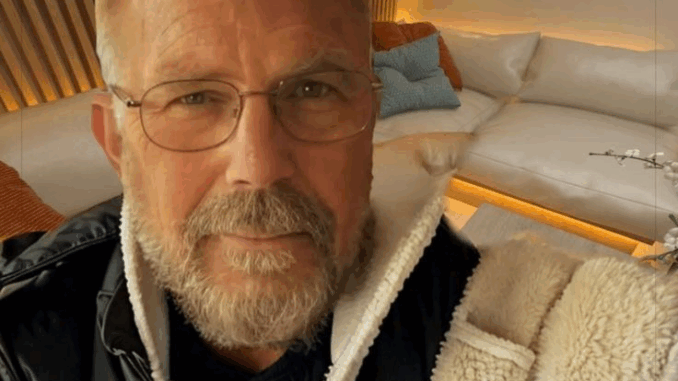
Kevin Costner has never been a stranger to the American frontier. From Dances with Wolves to Yellowstone, he’s shaped how Hollywood sees the West. But in his latest project, The West, Costner trades in nostalgia and myth for a hard-hitting, honest portrayal of the real stories that built—and broke—the American West.
This isn’t the romanticized cowboy fantasy we’re used to. It’s something much deeper, darker, and more human.
What Is The West About?
Costner’s The West is a sweeping historical docu-drama that explores the rise of the American frontier through multiple lenses—indigenous perspectives, settler struggles, brutal battles, broken promises, and cultural shifts that forever altered the land.
Rather than glorify the usual tropes, it dismantles them with empathy, depth, and raw truth.
Why Kevin Costner Took on This Project
For Costner, The West is more than a TV series or film—it’s a passion project years in the making. He’s long believed that most Westerns failed to represent history truthfully, especially when it comes to Native American voices and the violent cost of expansion.
In interviews, Costner has said, “We owe people the truth, not just the legend.” That vision fuels every scene of The West.
A Different Kind of Western
Unlike the classic cowboy tales full of saloon shootouts and lone rangers, The West focuses on:
-
The forced relocation of Native tribes
-
The human cost of Manifest Destiny
-
The environmental and social destruction caused by westward expansion
-
Unsung heroes—both settlers and indigenous—who resisted injustice
Costner’s Signature Style: Grit Meets Grace
Fans of Yellowstone will recognize Costner’s cinematic style here: sweeping landscapes, morally complex characters, and intimate storytelling. But The West goes even further. It’s not just gritty—it’s tragic, thought-provoking, and unflinchingly honest.
Authenticity First: Behind-the-Scenes Efforts
To do justice to the material, Costner collaborated with Native historians, anthropologists, and cultural advisors. The dialogue, costumes, and settings were all built from real research, not just Hollywood imagination.
That level of detail shows—every frame feels lived-in, real, and respectfully told.
Not Just Cowboys and Battles: The Real Lives Featured
This series sheds light on groups often left out of the Western narrative:
-
Native American leaders and families
-
African-American settlers and soldiers
-
Mexican-Americans navigating borderlands
-
Women who shaped communities from behind the scenes
These aren’t background characters—they’re at the heart of the story.
A Western That Doesn’t Flinch
The West doesn’t shy away from the violence and betrayal of American history. It explores:
-
The Sand Creek Massacre
-
The Trail of Tears
-
The breaking of treaties
-
The rise of railroads and the exploitation they brought
It’s not always easy to watch—but that’s the point.
Kevin Costner’s Role in the Series
Costner serves as executive producer, narrator, and occasional on-screen presence. His gravel-toned voice adds gravity to the narration, grounding the series in a tone of reflection rather than action.
How The West Compares to Costner’s Past Projects
While Dances with Wolves told one powerful story, The West paints a much broader and more complex picture. If Yellowstone gave you a modern take on frontier justice, this series rewinds the clock to show how those dynamics began.
Critical Reception: A Mixed But Powerful Response
Critics have praised the series for its scope and courage. Some viewers, used to sanitized versions of Westerns, may feel uncomfortable. But most agree—it’s a long-overdue reckoning with a foundational part of American history.
The Visuals: A Cinematic Masterpiece
Shot across the plains, deserts, and mountains of North America, The West is visually stunning. Sweeping drone shots of untouched landscapes serve as haunting reminders of what’s been lost—and what’s still worth preserving.
Educational Value Meets Entertainment
While it’s deeply emotional and sometimes hard to watch, The West also serves as a powerful teaching tool. Schools and educators have praised its commitment to historical truth and balanced storytelling.
Is The West the Future of Historical Westerns?
If Costner’s vision catches on, we could see a new era of Westerns—ones that aren’t afraid to get real. The West may be a turning point where history replaces myth as the driving force behind frontier storytelling.
Conclusion: The Western We Didn’t Know We Needed
Kevin Costner’s The West is more than just a series—it’s a reckoning. It takes a genre long built on fantasy and turns it into something raw, beautiful, and necessary. It doesn’t ask us to pick sides—it asks us to look closer, understand more, and feel the full weight of the past.
It’s not the Western you grew up with. And that’s exactly why it matters.
FAQs
1. What is The West by Kevin Costner about?
It’s a historical drama that explores the true story of America’s expansion, focusing on indigenous voices, settlers, and untold tragedies of the frontier.
2. Is The West based on real events?
Yes, the series is grounded in historical research, featuring real events, locations, and people.
3. Where can I watch The West?
It is available on major streaming platforms and premium networks (check your region for availability).
4. How is this different from other Westerns?
Unlike traditional Westerns, The West doesn’t romanticize the frontier. It offers a truthful, often tragic view of history.
5. Is Kevin Costner acting in the show?
He narrates and produces the series, with occasional appearances to anchor key moments.
